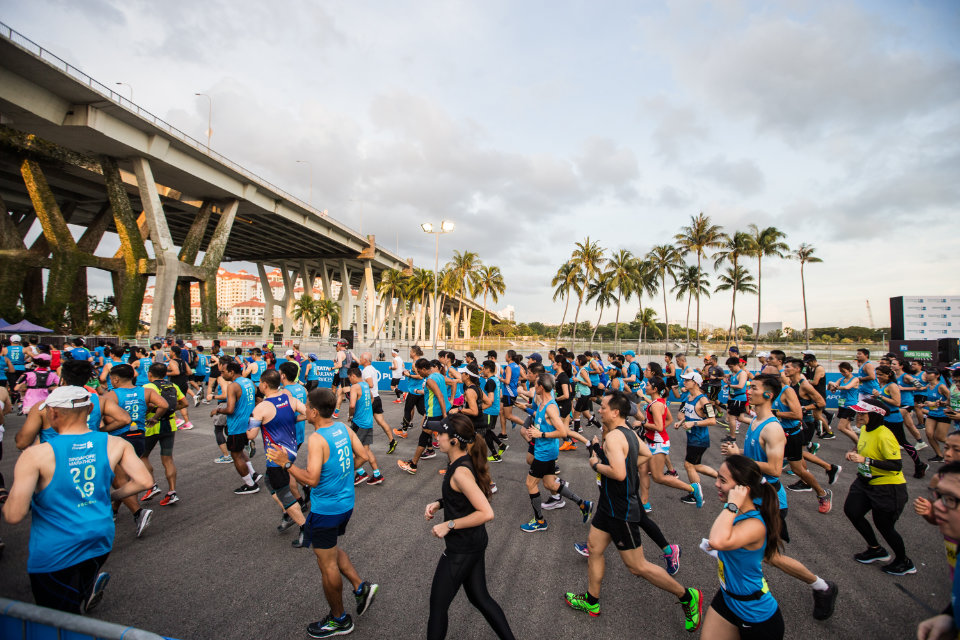The allure of the marathon is undeniable – a grueling 42.195-kilometer test of endurance, mental fortitude, and unwavering commitment. For many, it represents the pinnacle of personal achievement in running, a journey that transforms ordinary individuals into extraordinary athletes. Yet, simply signing up for a marathon is just the first step; the true challenge, and the key to both success and enjoyment, lies in meticulous marathon preparation. This isn’t just about logging miles; it’s a holistic endeavor encompassing scientific training principles, precise nutrition, intelligent recovery, and profound psychological resilience. This comprehensive article delves deep into the essential tips and strategies required to conquer the marathon distance, guiding aspiring and experienced runners alike through every crucial phase. We’ll unpack the intricate training methodologies, the vital role of nutrition, the art of injury prevention, and the mental game necessary to cross that finish line strong, transforming the daunting prospect into a triumphant reality.
Building Your Training Plan Wisely

A well-structured training plan is the bedrock of successful marathon preparation. It’s your roadmap, guiding your progress week by week and ensuring you build endurance and strength safely and effectively.
Key Principles for Constructing Your Marathon Training Plan:
- Understand Periodization (Phased Training): Don’t just run the same miles every week. A good marathon plan uses periodization, dividing your training into distinct phases:
- Base Building (4-8 weeks): Focus on consistent, easy-paced mileage to build aerobic capacity. This is about volume, not speed. Lay a solid foundation to prevent early injuries.
- Strength & Speed (6-10 weeks): Introduce tempo runs (sustained, comfortably hard effort), interval training (short bursts of faster running with recovery), and hill repeats to improve speed, power, and lactate threshold.
- Peak Mileage/Long Runs (4-6 weeks): Gradually increase your longest runs, building up to 20-22 miles (32-35 km) approximately 3-4 weeks before race day. These runs are crucial for physical and mental endurance.
- Taper (2-3 weeks): Significantly reduce mileage and intensity to allow your body to fully recover, store glycogen, and feel fresh on race day. This is where fitness gains from hard work truly manifest.
- The “Long Run” is Non-Negotiable: This is the most critical workout. Gradually extend your long run each week, typically accounting for 25-30% of your weekly mileage. It trains your body to burn fat more efficiently, builds mental toughness, and helps you practice hydration and fueling strategies.
- Include Variety: Speedwork, Tempo, and Easy Runs: Your plan shouldn’t just be about long, slow distances.
- Easy Runs: The majority of your mileage should be at a conversational, easy pace. These build aerobic base and aid recovery.
- Tempo Runs: Sustained efforts at a challenging but controllable pace (where you can speak short sentences). These improve your lactate threshold, making you more efficient at race pace.
- Interval Training/Speedwork: Short, fast bursts of running with recovery periods. These improve VO2 max, running economy, and leg turnover. Examples include track repeats (e.g., 400m, 800m) or fartleks (speed play).
- Hill Repeats: Running up hills builds strength and power, mimicking race-day undulations without the high impact of pure speedwork.
- Incorporate Strength Training (2-3 times/week): Don’t skip the gym! Strong muscles, especially glutes, core, and hamstrings, improve running economy, prevent imbalances, and reduce injury risk. Focus on compound movements (squats, deadlifts, lunges) and core stability.
- Cross-Training (1-2 times/week): Activities like cycling, swimming, or elliptical training provide cardiovascular benefits without the impact of running, aiding recovery and reducing overuse injury risk. They also work different muscle groups, promoting balanced development.
- Rest Days are Training Days: Active recovery (light movement like walking) and complete rest are crucial for muscle repair, energy replenishment, and preventing overtraining. Don’t view rest days as missed opportunities; they are vital for adaptation.
- Listen to Your Body (Flexibility): While a plan is important, be prepared to adjust. If you feel excessive fatigue, persistent pain, or signs of illness, take an extra rest day or reduce intensity. Pushing through significant discomfort often leads to injury.
The Critical Role of Nutrition and Hydration
Proper nutrition and hydration are not supplementary; they are central pillars of effective marathon preparation, impacting energy levels, recovery, and overall performance.
Essential Nutrition and Hydration Strategies for Marathoners:
- Carbohydrate Loading (Pre-Race): In the 3-4 days leading up to the marathon, significantly increase your carbohydrate intake (70-85% of total calories). This maximizes glycogen stores in your muscles and liver, providing readily available energy for race day. Focus on complex carbs like pasta, rice, potatoes, and whole grains.
- Consistent Hydration (Daily): Don’t wait until race week to hydrate. Drink water consistently throughout your training, aiming for clear urine. Increase intake during and after long runs, and in warmer weather. Electrolyte drinks can be beneficial during longer sessions to replenish lost salts.
- Fueling During Long Runs: Practice your race-day fueling strategy during your long runs. Experiment with different types of energy gels, chews, or sports drinks. Aim for 30-60 grams of carbohydrates per hour after the first hour of running. This trains your gut and ensures you find what works best for your stomach.
- Post-Run Recovery Nutrition: Within 30-60 minutes after a long or intense run, consume a mix of carbohydrates and protein (e.g., 3:1 or 4:1 carb-to-protein ratio). This helps replenish glycogen stores and initiate muscle repair. Chocolate milk, a banana with peanut butter, or a recovery shake are good options.
- Balanced Daily Diet: Beyond specific race-day fueling, maintain a balanced diet rich in whole foods:
- Lean Proteins: For muscle repair and growth (chicken, fish, legumes, tofu).
- Healthy Fats: For overall health, hormone production, and satiety (avocado, nuts, seeds, olive oil).
- Fruits and Vegetables: For vitamins, minerals, antioxidants, and fiber, crucial for immune function and overall well-being.
- Avoid Dieting During Training: This is not the time for significant caloric restriction or drastic weight loss. Your body needs ample energy to fuel training and recovery. Focus on nutrient density and adequacy.
- Electrolyte Balance: Especially in warmer climates or during intense training, ensure adequate intake of electrolytes (sodium, potassium, magnesium). Sports drinks, electrolyte tablets, or certain foods can help prevent imbalances.
Proactive Injury Prevention and Management

Injuries are the most common reason marathon hopefuls don’t make it to the starting line. A proactive approach to injury prevention is paramount throughout your marathon preparation.
Critical Strategies for Injury Prevention:
- Listen to Early Warning Signs: Don’t ignore persistent aches or pains. “Pushing through it” often leads to more serious injuries. Learn the difference between muscle soreness and actual pain.
- Proper Running Shoes and Rotation: Invest in high-quality running shoes that are appropriate for your foot type and running gait. Replace them every 400-600 miles (650-950 km). Consider rotating between two pairs to allow them to fully decompress.
- Gradual Progression (The 10% Rule): Avoid increasing your weekly mileage, intensity, or long run distance by more than 10% from one week to the next. This allows your body to adapt gradually and reduces overuse injury risk.
- Dynamic Warm-up Before Runs: Perform 5-10 minutes of dynamic stretches (leg swings, arm circles, lunges) before each run to prepare your muscles and joints for activity, increasing blood flow and range of motion.
- Static Stretching (Post-Run/Daily): Hold static stretches (e.g., hamstring, quad, calf stretches) for 20-30 seconds after your runs or as a separate session to improve flexibility and reduce muscle stiffness.
- Foam Rolling and Self-Massage: Regularly use a foam roller, massage ball, or massage stick to release muscle tightness, improve blood flow, and address trigger points, especially in common problem areas like IT bands, quads, and glutes.
- Targeted Strength Training: Focus on strengthening key running muscles: glutes, hamstrings, core, and hip flexors. Stronger muscles provide better support for your joints and improve running economy, reducing injury risk. Examples: squats, lunges, planks, glute bridges.
- Cross-Training for Active Recovery and Balance: As mentioned, activities like swimming or cycling reduce impact while maintaining cardiovascular fitness, giving your running muscles a break and promoting balanced muscular development.
- Post-Run Recovery Protocols: Beyond nutrition, consider ice baths, cold plunges, or compression socks to reduce inflammation and accelerate muscle recovery after long or intense runs.
The Mental Edge
The marathon is as much a mental challenge as it is a physical one. Developing psychological resilience is a crucial, yet often overlooked, component of marathon preparation.
Mental Strategies for Conquering the Marathon:
- Visualize Success: Regularly visualize yourself running strong, executing your race plan, and crossing the finish line feeling powerful and accomplished. Positive mental imagery builds confidence.
- Break Down the Race: Don’t think about 42.195 km all at once. Break the marathon into smaller, manageable segments (e.g., 5km chunks, from aid station to aid station). Focus only on the current segment.
- Positive Self-Talk and Affirmations: Replace negative thoughts (“I can’t do this”) with positive affirmations (“I am strong,” “I trained for this,” “I am capable”). Your internal dialogue profoundly impacts your performance.
- Practice Managing Discomfort: During your long training runs, learn to embrace and work through periods of discomfort. Recognize that discomfort is not always pain and that you can continue to move forward. This builds mental toughness.
- Develop a Mantra: Create a short, powerful phrase or word (e.g., “Strong and steady,” “Keep pushing,” “One step at a time”) that you can repeat to yourself when fatigue sets in.
- Focus on the Present Moment: Avoid dwelling on past miles or worrying about future ones. Stay present, focusing on your breathing, your form, and the immediate surroundings.
- Know Your “Why”: Remind yourself of your deepest motivations for running the marathon – whether it’s for charity, a personal challenge, or honoring someone. This intrinsic motivation provides strength when you need it most.
- Simulate Race Day Pressure: During your longest runs, intentionally introduce challenges (e.g., run a section faster, practice drinking on the move) to mentally prepare for race-day pressures and unexpected scenarios.
- Pre-Race Routine: Establish a calming pre-race routine that includes visualization, light stretching, and positive affirmations. This routine provides comfort and predictability, reducing anxiety.
The Art of Rest and Readiness
The taper, the final 2-3 weeks before race day, is arguably the most challenging and crucial phase of marathon preparation. It’s when you significantly reduce mileage to allow your body to recover and supercompensate.
Effective Tapering Strategies:
- Gradual Reduction in Mileage: Over 2-3 weeks, progressively reduce your weekly mileage by about 25-30% each week. Your longest run should be about 3 weeks out from race day, followed by a significant cut.
- Maintain Intensity (Reduced Volume): Don’t cut out all speedwork or intensity. Keep short, sharp bursts of effort in your runs (e.g., a few strides at race pace) to keep your legs feeling fresh and fast, but drastically reduce the volume of these efforts.
- Prioritize Sleep: Aim for 8-9 hours of quality sleep every night during the taper. This is when your body truly repairs and stores energy.
- Continue Good Nutrition and Hydration: Stick to your healthy eating habits. This isn’t the time to drastically change your diet or restrict calories. Focus on nutrient-dense foods to support recovery. Start your carb-loading specifically in the final 3-4 days.
- Listen to Your Body (Again!): You might feel sluggish or antsy during the taper – this is normal as your body adjusts to reduced load. Trust the process. Don’t be tempted to add extra miles.
- Avoid New Activities: Don’t try any new workouts, shoes, or foods during the taper. Stick to what’s familiar and proven.
- Mental Preparation: Use this time for visualization, reviewing your race plan, and building mental confidence. Remind yourself of all the hard work you’ve put in.
- Minimize Stress: Avoid unnecessary stress in other areas of your life. Keep calm and focus your energy on the upcoming race.
Race Day Execution
All the weeks and months of marathon preparation culminate on race day. Effective race day execution is about trusting your training and sticking to your plan.
Race Day Tactics for Optimal Performance:
- Stick to Your Plan: Do not deviate from your fueling, hydration, or pacing strategy that you practiced in training. Don’t get caught up in the excitement and go out too fast.
- Pacing is King: Start conservatively. The first few miles should feel easy, even too easy. Resist the urge to follow faster runners. A consistent or slightly negative split (second half faster than first) is often ideal. Use a GPS watch to monitor your pace, but also listen to your body.
- Hydrate Early and Often: Don’t wait until you’re thirsty. Sip water or electrolyte drinks at every aid station from the beginning. Practice this in training to know your needs.
- Fuel Consistently: Take your gels, chews, or sports drink as planned, typically every 30-45 minutes after the first hour. Don’t skip a fueling opportunity.
- Manage Discomfort and Pain: When the inevitable discomfort sets in (usually around miles 18-22 or 30-35km), use your mental strategies (mantra, visualization, breaking it down). Focus on your breathing and form.
- Take Advantage of Aid Stations and Crowds: Utilize the aid stations for water and fuel, and the crowds for motivation. High-five spectators, acknowledge their cheers. Their energy can be a powerful boost.
- Stay Positive and Flexible: Things might not go exactly as planned. Be prepared to adjust. If you hit a wall, walk briefly, re-focus, and start running again. Every step forward is progress.
- Focus on Your Own Race: Don’t compare yourself to others. Run your race, at your pace, based on your training.
Post-Race Recovery
Finishing the marathon is a huge accomplishment, but the race isn’t truly over until you’ve recovered properly. Post-race care is crucial for avoiding injury and setting yourself up for future runs.
Essential Post-Marathon Recovery Tips:
- Immediate Refueling (Within 30-60 minutes): Consume a balanced meal with carbohydrates and protein immediately after finishing to begin glycogen replenishment and muscle repair. This window is critical.
- Hydrate, Hydrate, Hydrate: Continue to drink water and electrolyte beverages to rehydrate thoroughly.
- Keep Moving Gently: Avoid immediately sitting or lying down. Walk slowly for 10-15 minutes after crossing the finish line to help blood flow and prevent stiffness.
- Light Stretching and Foam Rolling: Gentle stretching and foam rolling can help alleviate muscle soreness, but avoid deep tissue work in the first 24-48 hours.
- Ice Baths/Cold Showers (Optional): Some runners find short ice baths or cold showers beneficial for reducing inflammation and soreness in the first few hours after the race.
- Prioritize Sleep: Allow for plenty of sleep in the days following the marathon. Your body needs significant rest to recover from the extreme exertion.
- Nutrient-Dense Foods: Continue to eat a balanced, nutrient-rich diet to support recovery and repair. Avoid excessive junk food, even as a reward.
- Avoid High-Impact Activity: Give your body at least a few days, often a week, of complete rest from running. When you return, start with very light, easy walking or cross-training.
What Comes Next?
The completion of a marathon is a transformative experience, but it also prompts the question: what’s next? The post-marathon period is a time for reflection and setting new goals.
Continuing Your Running Journey Post-Marathon:
- Reflect and Learn: Take time to reflect on your marathon preparation and race day. What went well? What could be improved for next time? Use this as a learning experience.
- Address Any Lingering Issues: Pay attention to any persistent aches or pains. Address them with a physical therapist or medical professional before starting new training cycles.
- Set New Goals (Non-Running or Running): Consider a break from structured running goals. Explore other activities, or set different running goals like a faster 5K, a half marathon, or even try trail running.
- Maintain a Running Base: Even during your recovery period or break, try to maintain a consistent base of easy, enjoyable running to retain your fitness and make future training easier.
- Give Back: Share your experience and tips with other aspiring marathoners. Your journey can inspire and guide others.
Conclusion
Conquering the marathon is a profound journey, a testament to what the human body and mind can achieve when committed to a singular, challenging goal. Through diligent marathon preparation encompassing smart training, meticulous nutrition, proactive injury prevention, and unwavering mental fortitude, the daunting distance transforms into a remarkable triumph. It’s a journey that leaves you stronger, wiser, and forever changed by the incredible experience of pushing your limits and crossing that finish line. May your miles be strong and your finish lines be victorious.



